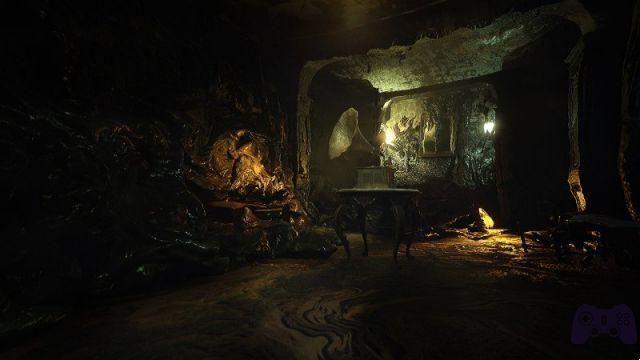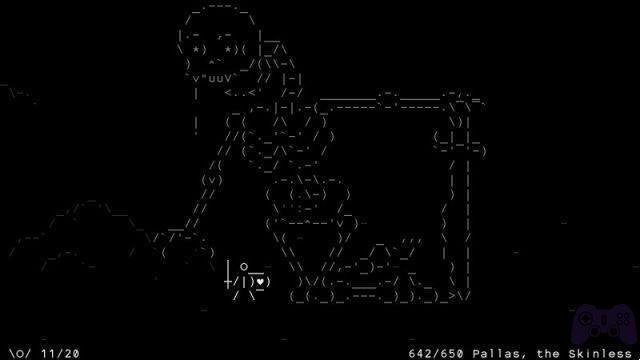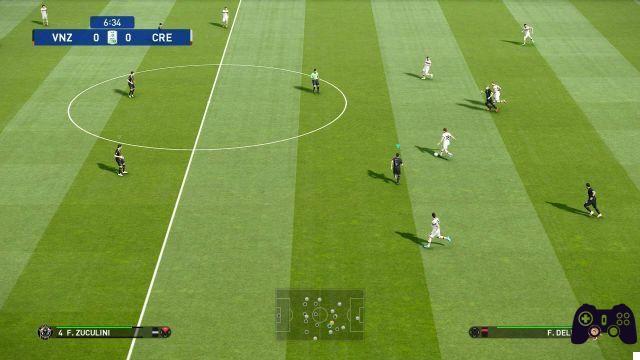What is Final Fantasy? This is the big question that has not stopped raining down on producer Naoki Yoshida in recent months, since hordes of critics have violently attacked the decision to channel the series into a formula based on pure action. Is the essence of the saga really in the combat system? Stating with certainty where its soul resides is impossible, because if there was a univocal answer Square Enix would never have been able to make mistakes, while the fans would not have each formed an intimate relationship with so many adventures so different from each other. There are those who shed tears at the romantic epilogue to the story of Tidus, there are those who fell in love with the stylized silhouettes of Terra, Celes and Locke, there are those who were enchanted by the emotion of tactical confrontations against invincible deities. Finally, there are those who simply love to be lulled by splendid melodies while exploring breathtaking landscapes.
Like any other fan, Naoki Yoshida has also developed a personal vision of what Final Fantasy should be, with the big difference that, back in 2015, Square Enix CEO Yosuke Matsuda decisively knocked on his office door and He told him that he asked him to design a new and colossal chapter of the saga. Why bet so much on him? The reason is very simple: if each episode published in the last seventeen years was quickly overwhelmed by waves of criticism, Final Fantasy 14 transformed overnight into the oasis of success that led to the beatification of the figure of Yoshida: For his colleagues he became a kind of King Midas, for the public the hero that the series has always needed.
Since that investiture, several moons have passed, eight long years that have completely changed the face of the Creative Business Unit III, or the team of Avengers carefully recruited by Yoshi-P with the aim of achieving an impossible feat: returning the high-sounding name of Final Fantasy to the glories of a vanished era, rekindling the ancient flame that had been able to imprint the saga on the hearts of millions of people. Composer Masayoshi Soken, combat designer Ryota Suzuki, producer Hiroshi Takai's right-hand man, creatives like Mitsutoshi Gondai and writers of the caliber of Kazutoyo Maehiro: dozens of grandmasters finally gathered under the banner of this general, accepting without hesitation the complex mission that was assigned to him.
A mission that, however, proved very difficult even for a handful of superheroes. In fact, Final Fantasy 16 has proven to be a video game with a double soul, divided between dazzling lights and vast areas of shadow; a work supported by great artistic inspiration, with a heart that beats in unison with the narrative component, but rooted in a formula whose problems go far beyond the easy target of the combat system. It is the best episode of the series in a long time, it is the theater of a fascinating story, it is the cradle of an extraordinary world, but it is still far from the ideal of absolute excellence that should accompany the legacy of the Final. Fantasy name. How is it possible that two such different natures can coexist in the same project? Find out in ours Final Fantasy 16 Review.
Valisthea's Masterpiece: The Game World
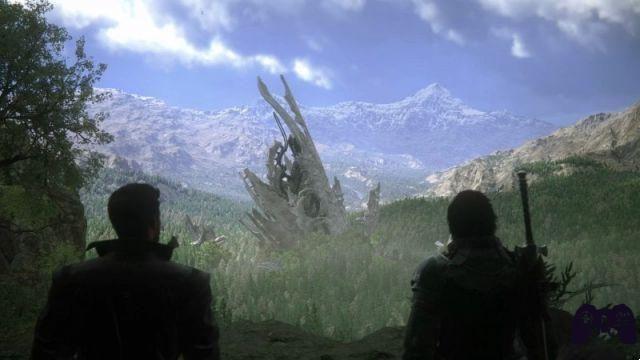
The zero point of the revolution that Yoshida's team is pursuing lies in the Valisthea world building, a perfect mechanism in which each gear has been placed with obsessive precision. Never, in the entire history of the saga, has a universe so full of details and historical coherence emerged, not even from the confines of Yasumi Matsuno's famous Ivalice: the continents of Ciclonia and Cineria have centuries of wars, dynasties, heroes behind them. from them. of habits and customs that refine a narrative fresco nothing less than enormous, so vast that it has found a respite even in the fabric of the game; If, through the Active Time Lore functionality, it is possible to suspend the action at any time - even during movies - to obtain information and short anecdotes dedicated to the elements of the sequence that are being experienced, there are even characters dedicated exclusively to collecting and analyzing the history. "lore", ready to explain in detail the geopolitical map of the emerged lands and raise the curtain on an immense and interesting compendium of information.
The initial inspiration, which the work does not try to hide in the slightest, comes from A Song of Ice and Fire by George R. R. Martin - better known as Game of Thrones -, whose raw and dark essence was translated into the language of Final Fantasy, taking advantage of the medieval setting to touch on much thornier issues than the series' legacy. War, discrimination, immigration and environmental issues constantly emerge from the murkiest corners of experience, providing a panorama that does not simply reveal itself. violently physically, but also and above all psychologically. Just think about the mere existence of Wielders, that is, people who can use magic without the help of Crystals, abominations equated to mere tools that can be killed with impunity, used as pets, tortured for the pure pleasure of doing so, without No one would even think of lifting a finger, regardless of emotional ties and even blood ties.
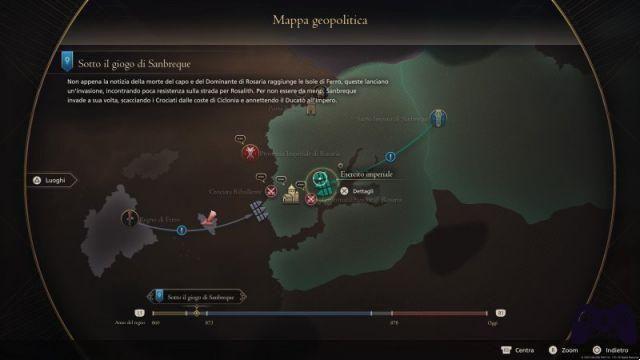
The lurking shadow of death has also been stolen from the Game of Thrones cauldron, a dark background that accompanies every beat of the adventure. The characters in Final Fantasy 16 are first and foremost people of flesh and blood, and as such can become ill, stabbed, or crippled at any time, completely stripping the cast of any sense of the genre's typical "plot armor." The specter of death spares no one, leading even positive characters to desire to destroy lives, pursue revenge, cut throats without hesitation, establishing the contours of The bloodiest instance of Final Fantasy. since the brand is present on the market.
The real masterstroke, however, lies in the way this dark fantasy genre has been developed. It fits perfectly with the images of the saga., creating a space tailor-made for Eikons, crystals, magic, and even Chocobos. The terrifying Shiva that dominates the battlefields from above, Odin's Zantetsuken sword that cuts the skies of the Crystalline Domain in half, the Dragon Knights of Sanbreque. that share the equipment and even the movements of the historical Dragon work: the magical dimension at the base of Final Fantasy is never questioned, an atmosphere that constantly fills the lungs of the player, whether in the form of immense Mother Crystals at the feet of the the great capitals rise, or with the shelter of an unmistakable Jaguar preparing to ambush the protagonists.
The great stories are back: plot and characters
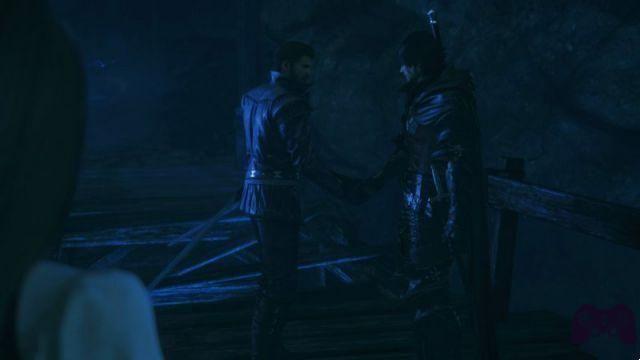
If the world of the twin continents is the beating heart of Final Fantasy 16, the stories and characters those who move on stage undoubtedly represent his soul. Clive Rosfield is a three-dimensional protagonist, a man who constantly pays the price for his mistakes, continually forced to grow, evolve and make very hard concessions, fighting on the front lines to defend what he will little by little learn to believe in. But the most interesting thing is that he moves within the confines of a living world, in which the pages of the story continue to flow even when he is not present, voluntarily giving way to different personalities whose character is colored through an appropriate scale. of greys.
The absence of the classic character party The playability is not perceived even for a moment, because the figures that orbit around Clive inherit this role in a masterful way and can take initiatives with complete autonomy, exactly as happened to the group of secondary characters introduced in Final Fantasy 14. The very powerful Jill Warrick, the faithful Gav, without forgetting Cidolfus Telamon - better known as Cid - a sensational figure to say the least, or even the sparkling Mid: for the moment these names will mean nothing to you, but all together they perfectly embody the concept of " group" that has become an integral part of the foundation of the series. To steal the show, only the great exponents of Valisthea's political board intervene, who by the way are also the Dominants of the different Eikons, such as the prince of Sanbreque Dion Lesage, who hides the terrible power of Bahamut under his reassuring blonde hair. or the ruthless King Barnabas Thalmr, who, thanks to Odin's sword, managed to unify the entire continent of Cineria; The narrative lens narrows and widens several times around these figures, unfolding a great choral affair which involves all the dynasties at the center of the struggle for power.
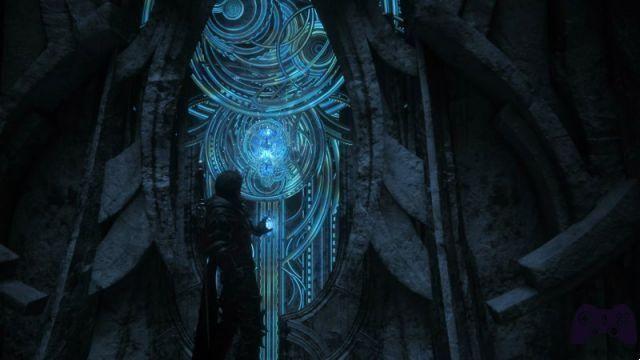
The story runs along two parallel paths: the one that underlies the purely human story, governed by greed, desire and the fight for survival, which is flanked by the classic occult path, son of the great JRPG maxim that reads : "It starts with a war and you end up fighting the gods." It is a story of revenge, maturation and redemption that grows hand in hand with its protagonists, a roller coaster of sequences that become exponentially more spectacular, slowly taking off until exploding in a great pyrotechnic finale. The integrity of the narrative is only cracked when second nature begins to prevail over first, or when the deus ex machina intervenes forcefully in a plot that was already functioning perfectly in its political and concrete dimension.
This happens mainly due to the presence of a villain quite weak, at least compared to the other opponents that cross Clive Rosfield's path. The choice to envelop the great puppeteer in a thick blanket of fog weakens the impact of the final escalation, and what is missing is precisely that deep characterization of the "bad guy" that has become a true hallmark of the Creative Business Unit III , which she directs to create characters that ended up at the top of the popularity charts, like the beloved Emet Selch. By the way, some very well-written secondary characters, such as the matron Isabelle, the innkeeper Martha and many others, could not have the aesthetic care they would have deserved, presenting themselves as anonymous NPCs created by a cold character editor. rather than the inspired pencils of a character artist. All that said, it's been many, many years since a Final Fantasy chapter adhered so strongly to the essence of the name "Final Fantasy."
A heavy structure: rhythm and gameplay.
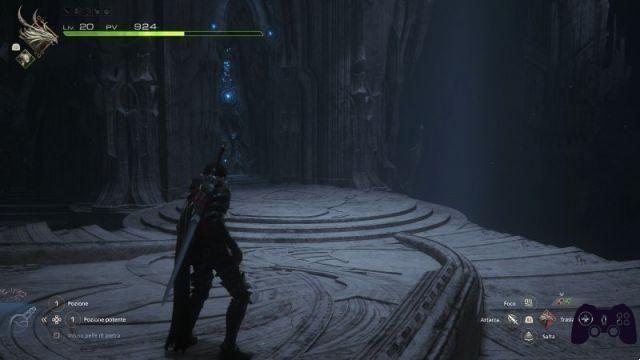
The structure of Final Fantasy 16 is very particular: the result of decades of experience acquired by the development team, it unexpectedly chooses to anchor itself to the architecture that usually supports the large expansions of the fourteenth online chapter. Work alternates very linear sequences with a high level of adrenaline - practically spectacular dungeon corridor guarded by hordes of enemies and fierce bosses, with long sections with a more measured approach; Small pauses during which a new region is introduced along with its inhabitants, opening windows intended to dampen the pace of the action to allow the player to engage in secondary activities. This pattern continues almost unchanged throughout the adventure, each time raising the curtain on new open maps that mark the progression of the plot, characterizing fractions of the world before culminating again and again in an explosive main mission.
This architecture, which fits wonderfully into the gears of an MMORPG, is much more difficult to digest in an experience of this type, because the amount of "filler" activities translates into the continuous repetition of filler chapters always anchored to the same nature. You arrive in a new area, meet the local contact, participate in a chain of quests (almost always very banal "quests" that reveal the background of the cities) and then, little by little, you arrive at the next big action sequence. The saturation point arrives towards the middle of the adventure, after about thirty-five hours, at which point we encounter long sequences of mandatory missions that take the player to areas already explored to find ingredients, collect flowers and carry out a series of . of tasks that are anything but exciting, even at key moments in the plot. It goes without saying that what suffers the most is the rhythm, whose salvation lies exclusively in the desire to know what will happen plot-wise.
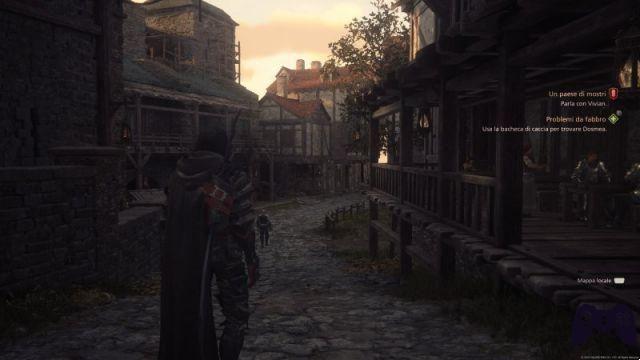
This design philosophy also extends to collateral activities and especially toexploration, the two segments that, not being able to count on the spectacular nature of the narrative, end up leaving with broken bones. Open maps have little to nothing to offer: you never come across an interesting encounter, a structure to enter, a minigame, and it's generally impossible to "discover" anything, even if it's a single interaction or line of dialogue; the regions simply exist silently, as if they were beautiful paintings to behold, offering no solid reason to hop on a Chocobo and ride off into the horizon. They become, on the other hand, the theater that hosts the side missions - around a hundred informed and guided activities - too often reduced to mere collecting missions, often insignificant both in terms of story and, more banally, in terms of rewards. Towards the beginning and end of the journey there are also well-written stories, willing to delve deeper into the places and characters, but with the exception of The Hunt, which according to tradition puts the player against unique variations of already known enemies. - It's mainly about collecting items, exterminating bandits and reporting back.
Stimulation problems are further exacerbated by a long series of small spots that taken individually are almost not noticeable, but together they end up having a hard impact on the fluidity of the experience. Shooting, for example, is activated only automatically and only in open areas, transforming an immediate gesture on paper such as navigating through the shelter - and completing missions within it - into a slow and repetitive coming and going between a character. and other; Likewise the action is constantly marred by the appearance of windows that unnecessarily pause the game to signal the end of the fight, the defeat of a character, the beginning of a chapter, even simply the completion of a banal installment. There are dozens of these rough edges, from the cumbersome internal shots that extend the duration of the dialogues without measure to the omnipresent transitions to black that divide the story into many small segments, placing the entire weight of responsibility on the shoulders of the story's narrative. main thread.
The spectacle above all: combat and mechanics.
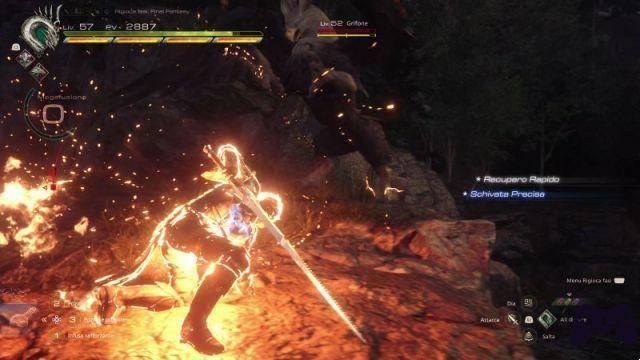
The one created by Ryota Suzuki for the combat system of Final Fantasy 16 is a "light" version of the pure style-action formula integrated into the sides of Devil May Cry 5, and if we define it lighter it is because the spectacular nature of the action is always predominant in terms of technical complexity and especially the challenge rate. Perfect to say the least for newcomers to the genre, who will immediately feel at home and will have no problem mastering it, it is instead a mix for the expert public, destined to find the greatest stimuli only during the last phases of the game. and in the part of the offer that goes beyond the end. Of course, battles can be optimized by pulling some interesting combinations out of the hat, maximizing dodges and parries, trying to never get hit to get special medals, but in most cases it is more than enough to use the available skills to emerge victorious from any confrontation, without ever perceiving any type of risk and instead enjoying the spectacle of the fireworks.
The fulcrum of the entire system lies, in fact, in the Eikon Abilities, thirty special attacks linked to the characteristics of historical summons: Clive can register up to three different sets of skills to switch at any time, for a total of six Eikon attacks available at the same time and accompanied by the distinctive traits of each creature. These moves, all subject to a cooldown, each perform a particular function: there are fire shots capable of penetrating the hordes, active parries that open spaces for devastating counterattacks, spells that pierce opponents over time or even whirlwinds of cuts that instead of aiming to cause damage, their objective is to break the enemy's guard. In fact, the "stagger" mechanic is of fundamental importance, which leads the toughest monsters to fall weakened to the ground once the defensive bar is exhausted, at which point it is advisable to exploit the most violent options to maximize offensive potential. Basically, within the sands, you find yourself in perform a kind of "rotation" in typical MMORPG style, sequentially launching all available skills and keeping an eye on their respective recovery times, taking advantage of a system of slashes reduced to the bone to fill the gaps between big explosions.
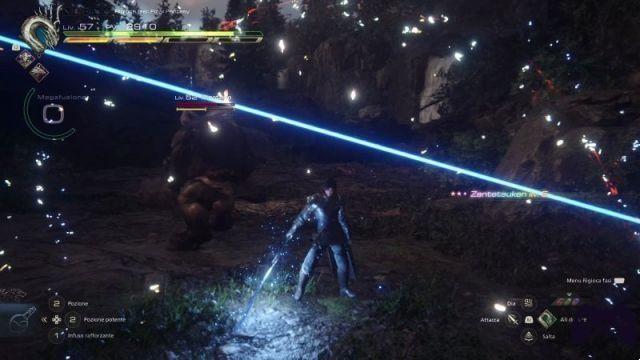
If Eikon's attacks are aesthetically spectacular, satisfying to launch and endowed with exceptional response when shooting, the task of raising the technical bar is reserved for precise dodging, whose ability to cancel animations is a splendid oasis in the desert of the action. Square Enix systems. Instead of betting on an intricate system of movements, the work relies on variety of skill combinations, taking an approach that is neither better nor worse, but simply different from the standards of the genre: there are Eikons like Odin - who nods to Vergil and his sword Yamato - designed to reward patience, accumulating charges destined to eliminate all the screen. with a single final cut; Others, for example Bahamut, offer techniques intended to support outright combat based on swords and magic. Finally, each one deploys his ultimate attacks, which due to the immense power would have been better linked to a resource bar, if it were not for the fact that this mechanic was absorbed by Transcendence - in English Limit Break - a transformation that increases Clive's damage and gives him allows you to recover health over time.
The range of options it only starts to widen at the end, when access to all Eikons is finally gained and opponents choose to adopt more complex defensive strategies, exploiting intricate telegraphed attacks reminiscent of Final Fantasy 14's raid structure. After very slow growth due to narrative needs, the system arrives to give its best in post-game activities, such as the Eikon mastery challenges in which failure becomes a concrete eventuality, or the Arcade mode that allows you to repeat missions to obtain qualifications, but above all the final fantasy mode. In this special version of the New Game +, with the arsenal fully unlocked, enemies are replaced by more powerful variants and use new strategies, for example transforming flying creatures into annoying medical units or equipping entire garrisons with defensive spells. In retrospect, implementing a higher level of difficulty from the beginning would undoubtedly have improved the experience of more experienced players, destined to live eighty hours during which it is almost impossible to know defeat.
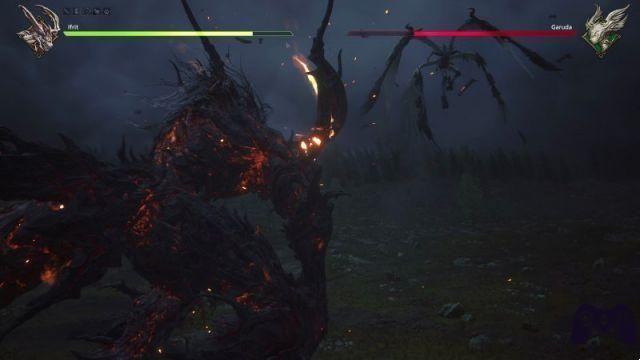
The second side of the coin is embodied by meet brother Eikon, true extremes of the formula based on cinematographic spectacle, battles between visually splendid divinities and entirely dedicated to glory in destruction. This, on the other hand, also means that the gameplay component is very dry, resolving itself into some technical combat sections that too often cede center stage to very long interactive movies flooded with quick temporal events. It goes without saying that these battles coincide with the essential crossings of the plot and their purpose is to launch the entire epic of the saga, but in most cases they are very diluted phases - on a couple of occasions it comes close. half-. duration of an hour, in which the actual game is reduced to just pressing a couple of buttons.
Finally, it is worth mentioning Role-playing component, which is presented in an extremely superficial way; the new system fails to create room for elemental resistances and weaknesses, minimizing the player's influence on the protagonist's stats, automatically giving him almost all the best equipment simply with plot progression, perhaps forever marking the detachment of historical activities such as the search - previously unguided - for the definitive weapons and accessories. In short, the main choice lies in the selection of the Eikons' abilities - intended to reach their full potential only in the post-game - and whoever decides to experiment in this direction will end up taking full advantage of the combat system, revealing unexpected situations. fragments of depth that will remain hidden from less attentive eyes.
Back to the future: art and technique
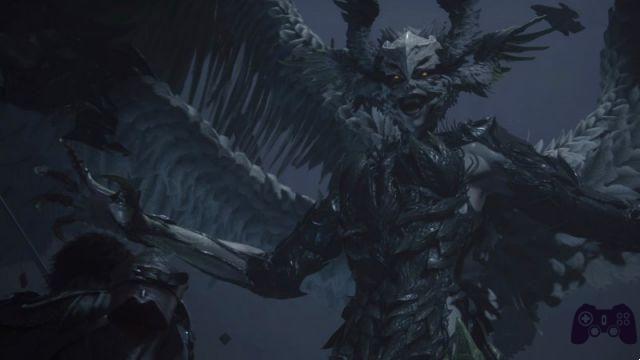
Creative Business Unit III has focused all its efforts on enhancing the fantasy behind the series, and the aforementioned Eikon battles are a perfect example of this philosophy: the visual component is essential, must constantly unfold in impressive sequences, exactly as it happened with computer graphic films in the days of the old PlayStation, with the colossal difference that now everything happens in real time on the screen. Raids on fortified capitals like Oriflamme, clashes in the fiery skies of Valisthea, armies facing each other on the battlefield: cinematic action plays an absolute leading role that requires the full support of all production departments, and each of them He responded quickly to the call.
de colonna sonora There is no need to even talk, because Masayoshi Soken has assumed the role of heir to the legendary Nobuo Uematsu with complete ease, creating a series of songs capable of elevating any situation to power, from apocalyptic confrontations to innocent collective drunkenness. In the same way you can celebrate for a artistic front that honored underground ruins moved by disappeared technologies, impenetrable fortresses at the foot of immense crystals, Eikon that seem to have emerged from the dreams of those who - twenty-five years ago - ran with their imagination in front of the polygons of ancient evocations. A level of care that is also found in the characterization and animations of the monsters, for example in the Ahriman variations that seem almost real, very close to the limit of verisimilitude, as the Molboro present had already noted. in the demonstration. This chisel work also returns to the combat system, because there has never been an action video game in which even active abilities could boast such attention to graphical detail.
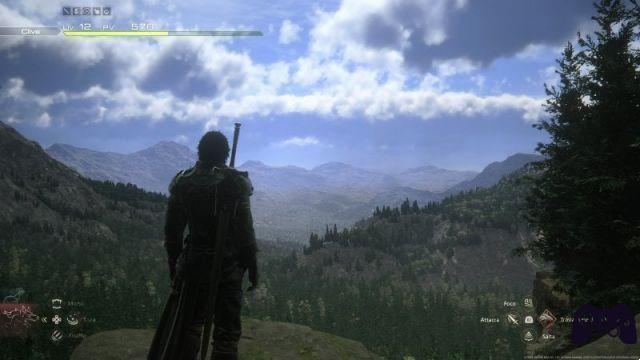
Despite the aesthetic quality, battles in framerate mode return aexcellent experience, especially considering the amount of effects and the number of enemies that alternate in the arenas, to the point that it's really hard to see even a single obvious swing. The issue only changes when the Eikons enter the scene, decidedly heavier game phases in which it rarely drops even below 30 fps for a few seconds. Generally The framerate mode is the one that guarantees the best experience, but it still presents a variable frame rate, very often destined to drop and, paradoxically, to do so precisely in the least frenetic sections, for example during the exploration of open maps. On the other hand, by favoring graphics, it happens that we witness the appearance of new details even with the naked eye, especially between the leaves of the vegetation, but it is really difficult to want to give up the fluidity that the alternative guarantees. , which is, to say the least, essential for a type title. The overall situation, already satisfactory in itself, was further improved by the day one patch, which resolved most of the performance issues in the orbit of the most challenging battles.
The last note refers to the dubbing, of the highest level in both the Spanish version (excellent) and the English version (truly exceptional), both entrusted to great voices, net of an adaptation that - except for some strange licenses such as the terminology used for magic - has perfectly framed the management of the project. This is just the last piece of a great mosaic of productive values which had been absent from the brand for years, has finally returned to show the technical quality and attention to the graphic sector that represented a trademark of the production in the 90s.
The great paradox of Final Fantasy 16
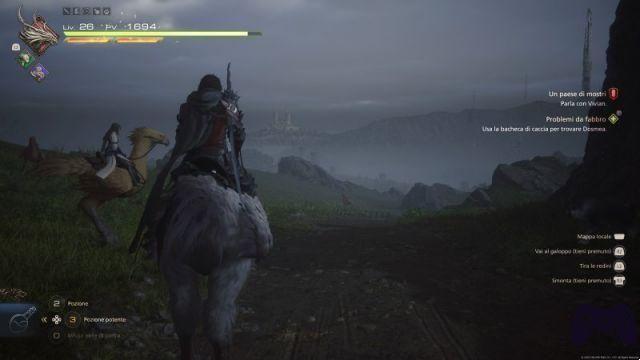
Final Fantasy 16 is among the best episodes of the series found in some twenty years, despite the large number of imperfections that plague its video game features. And this is where the impossible questions that opened this review come back to the scene with force: where is the soul of the saga? Which are the Elements that make a Final Fantasy chapter great.? Precisely in the multitude of possible answers the paradox of this work explodes, a title that embarrasses the last numbered episodes in terms of its adherence to the franchise's imagination, presenting itself at the same time as an amalgam still very far from excellence in the sense absolute. Everyone's perception of the adventure, therefore, is heavily influenced by what the heart of Final Fantasy represents to each fan: there are those who will place more importance on excellent world-building or narrative, and those, instead, They will place more importance on excellent world-building or narrative. It is difficult to take advantage of this due to the limited depth of the systems, which gives each individual element a completely different specific weight.
The Creative Business Unit III has invested all the energy of the last eight years in building an incredible narrative universe, meticulously refining a cast of extraordinary characters, studying a story worthy of the great classics, but above all working hard on the imaginary and on the aesthetic power of the saga. However, in the pursuit of these objectives, the exploration and collateral offering that have always characterized the series was lost along the way, it had to reduce the RPG element to a minimum and chose to sacrifice depth, before stumbling upon a rhythm. which clashes with many of the needs of a great cinematic adventure. Naoki Yoshida's ideals represent what the saga has lacked in recent decades, his vision deserves to be rewarded because it is synonymous with the right direction, but to make the definitive leap in quality a great Final Fantasy is not enough, it is also needs a great video game.
Conclusions
Tested version PlayStation 5 digital delivery PlayStation Store Holygamerz.com 8.5 Readers (226) 8.0 your voteFinal Fantasy 16 is the protagonist of one of the greatest paradoxes ever found in video games: it is both very close and far from the ideal level of excellence that the series has never stopped pursuing throughout its history. It is the best interpretation of the saga in many years, based on a plot close to the great classics, adorned with an extraordinary game world, as well as populated by a rich cast of memorable characters. At the same time, it stumbles upon an unstable rhythm of experience to say the least and a dense cascade of errors, focusing everything on the glorious spectacularization of the imagination, but forgetting many essential mechanisms during the reconstruction. In this hurricane of contradictions, it is incredible how he managed to complete the most difficult task of all: that of presenting himself to the world as the modern chapter absolutely closest to the traditional essence of Final Fantasy.
PRO
- Game world characterized with obsessive care.
- Fantastic plot like those of the past, exceptional characters.
- Impressive action sequences, to say the least.
- Artistic direction and soundtrack of ten
AGAINST
- Adventure rhythm and swinging action.
- Non-existent exploration, too many insignificant secondaries.
- RPG element stripped to the bones
- The combat system takes a long time to fully express itself.




